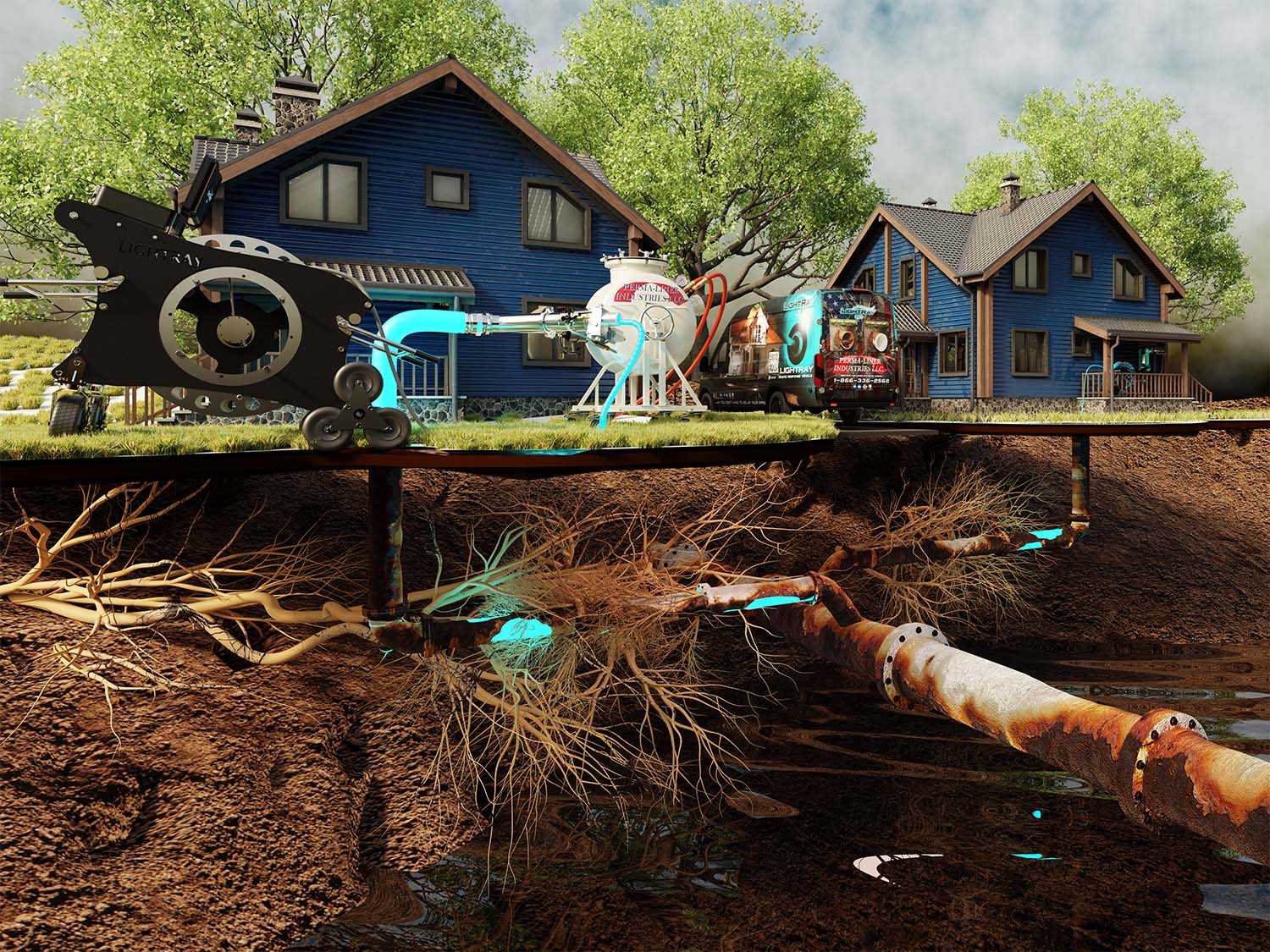How It Works
The repair process for sewers or drains begins with an initial inspection and cleaning, where a camera is used to identify repair areas, and the pipe is cleaned to ensure proper adhesion of the lining. A flexible, resin-coated liner is then prepared based on the pipe measurements. The liner, impregnated with resin, is inserted into the existing pipe using methods such as inversion (using air pressure) or pull-in-place (inflated to press against pipe walls). The resin is then cured using ambient temperatures, hot water, steam, or UV light to harden it and form a new pipe within the old one. A final camera inspection ensures the liner has adhered properly and the repair is successful. This method minimizes property disruption, reduces repair times, and provides a long-lasting, environmentally friendly solution to prevent future leaks or root intrusions.
How It Works: Trenchless Pipelining Deep Dive
Initial Inspection and Cleaning:
Before any repair work begins, the existing sewer or drain pipe is thoroughly inspected using a camera. This helps identify the areas that need repair. The pipe is then cleaned to remove any debris, roots, or blockages to ensure the lining adheres properly.
Liner Preparation:
A flexible, resin-coated liner is prepared based on the measurements obtained during the inspection. The liner is impregnated with a special resin that, once hardened, will form the new pipe within the old pipe.
Installation of the Liner:
The resin-saturated liner is inserted into the existing pipe. This can be done using a few different methods depending on the situation:
Installation Methods:
- Push-In-Place Method:
For shorter, more accessible repairs, the liner can be pushed directly into the pipe. This method is typically used when the damage is in a more confined area, and the pipe is accessible through cleanouts or other entry points. After the liner is positioned, it is cured, forming a permanent new pipe inside the existing one. - Pull-In-Place Method:
In this method, the liner is attached to a cable and pulled into the damaged pipe through existing access points, such as cleanouts or manholes. Once in place, the liner is inflated and cured, creating a new, strong pipe inside the old one. This method is ideal for spot repairs or shorter sections of pipe that need rehabilitation, offering a precise and targeted solution without the need for excavation. Full-Length Inversion:
The inversion method is used for longer stretches of pipe that require repair. The resin-saturated liner is turned inside out (inverted) as it’s pushed through the entire length of the pipe. This method ensures that the liner adheres tightly to the internal surface of the old pipe. Once the liner is in place, it’s cured, resulting in a seamless, joint-free pipe that’s durable and resistant to future damage.
Curing the Resin:
Once the liner is correctly positioned, it is cured to harden the resin. This can be done using ambient temperatures, hot water, steam, or UV light, depending on the type of resin used. For example, some systems use UV light to rapidly cure the liner, significantly reducing the time the process takes.
Final Inspection:
After the liner has cured, a final camera inspection is conducted to ensure the liner has adhered properly and that the repair is successful.
This process offers several benefits, such as minimal disruption to the property, reduced repair times, and a long-lasting solution that prevents future problems like leaks or root intrusions. It’s an environmentally friendly option that avoids extensive excavation and landscape damage.

The illustration depicts a trenchless sewer repair process using the ultraviolet LightRay system. This advanced method starts with inserting a flexible, resin-coated liner into the existing sewer pipe. Once in place, the liner is inflated to press against the inner walls of the old pipe. UV lights are then used to rapidly cure the resin, hardening it into a new, durable pipe within the old one. This process eliminates the need for extensive excavation, significantly reducing property disruption. The use of UV light ensures a quick and efficient cure, providing a long-lasting solution that prevents future leaks or root intrusions. The illustration highlights the precision and efficiency of the LightRay system, showcasing its benefits in sewer repair.

